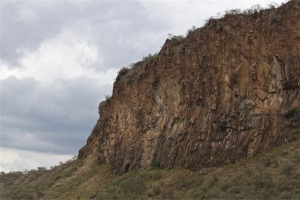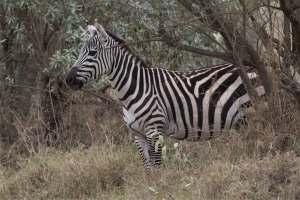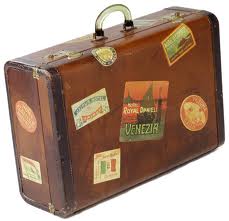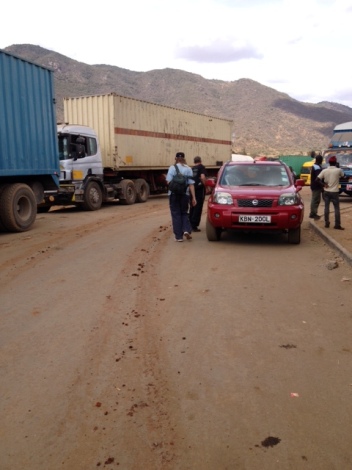Last week Pete announced that we were going to have a day off – it was a miracle! We often work on weekends and sometimes the weeks get really long. I’d always wanted to go to Hells Gate so last Wednesday that’s exactly what we did.
Hells Gate is one of the many national parks we have in Kenya. With our handy residents card we can get in to some of them for $5 while tourists pay $40. It’s the only park where you can jump on a bike and ride through the wildlife. There’s a dirt road which is in pretty good condition and you can literally just stop and make your way to the animals any time you like.
If you’re into rock climbing there’s a point about 5 minutes ride from the gate on which to practise. The deal is you have to hire a professional to assist, and we’re not really into that type of thing anyway.
About 2km’s from the park entry just as you turn the corner there are guys waving you down to hire their bikes, we kept going. First thing to remember – hire your bike from these guys and not at the park. The park ones are crappy as. My gears wouldn’t change, the back tyre was half flat and Pete had to disengage the rear brakes because they were rubbing badly. His chain kept falling off and he couldn’t change the gears either. We didn’t notice these things until we were a few k’s up the road.
You think the KWS (Kenya Wildlife Service) who manage all the national parks would maintain their bikes – oh, there’s no such thing as maintenance here! We called into the bike hire place outside the park and for the same price there were way better bikes.
Nairobi was wet when we left and we weren’t sure what the weather would be like in Naivasha where the park was. It was 2 hours away so it had to improve. We took raincoats anyway but didn’t need them. However it would’ve been good to take sunscreen – which we didn’t. While we did end up riding through a thunder storm (a bit scary) before that it was rather warm. At least we had a couple of litres of water – a must over here. I knew I was getting burnt but it all came out that night – my nose and forehead were as red as a beetroot. So while we take the antibacterial handwash with us I must remember to throw in one of the many sunscreen bottles we have in our cupboard.
Having a decent camera is important. There actually weren’t that many animals and they were all away from the road. Sure, we could get off our bikes and try to get up to them but these are wild animals and they ran as soon as we moved. There were lots of warthogs, a few zebras, gazelles, antelope and a few big birds. I was waiting to see some giraffes but these were a no go. It’s probably one time I’ve taken very few photos. Although I’ve got a zoom lens it’s still not big enough. One day I hope to invest into a big beast to capture better photos of these marvellous creatures.
Set aside your whole day to go to Hell’s Gate. I’d seen some amazing photos of The Gorge and really wanted to see it. We didn’t get to the park until 11am and with our detour to the camping ground (Pete wanted to suss it out) and crappy bikes we got to the gorge about 1pm. I could see the storm clouds starting to roll in. You can either take the 20 minute or 90 minute trek each way. While we could buy drinks at the rangers station you couldn’t buy lunch. We said no to the gorge, leaving it for next time (when we could drive in) when Liz would be with us. One of the great things about Kenya is that you can pretty much buy fruit and veges on the side of most roads. Pete had bought these really nice bananas so they kept us going all afternoon.
Because I thought we’d be doing a lot more walking I wore my hiking boots from Mt Kilimanjaro. They were a slight overkill, I’m wearing sneakers next time. It’s the short rainy season here so I wasn’t sure how wet the ground was going to be. In fact things were pretty dry. We haven’t been bike riding for years so our butts were a bit sore for a couple of days afterwards. Pete more so than me because I wore my mountain shorts, his were way thicker. We both forgot hats (you don’t wear helmets here) and didn’t need a jacket (which stayed in the car anyway). Basically, go prepared for any type of weather, use toilets at the start of the park and go and have lots of fun.
Hell’s Gate is good if you want to get out of the city for the day and just meander along. There’s no rush and there’s certainly plenty of places around to stop for food afterwards.

















